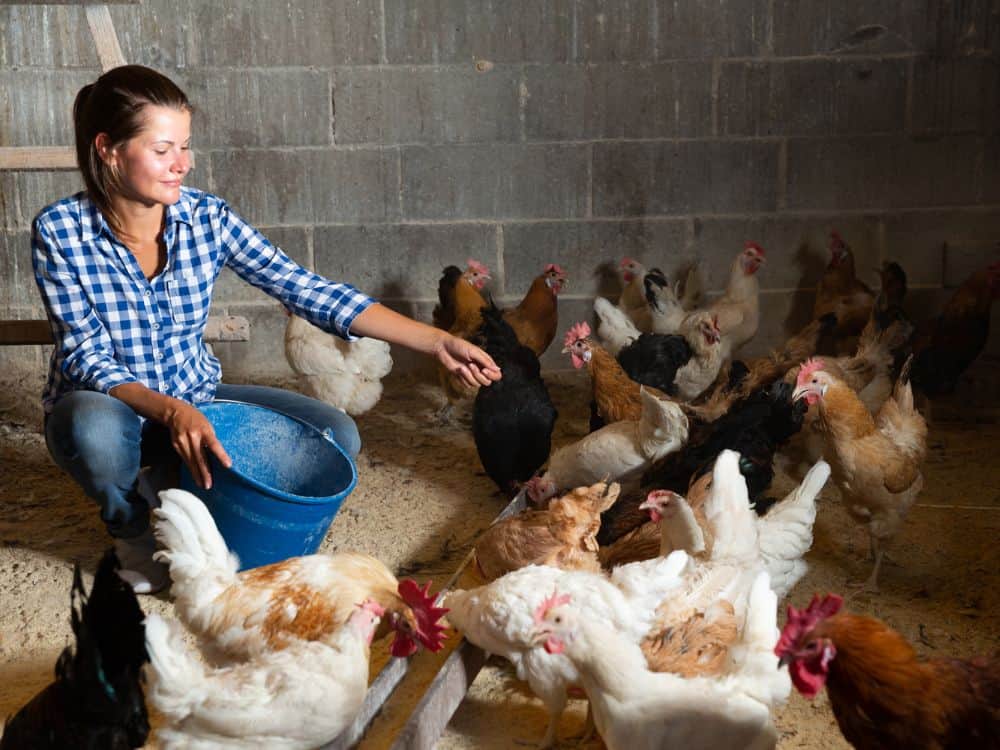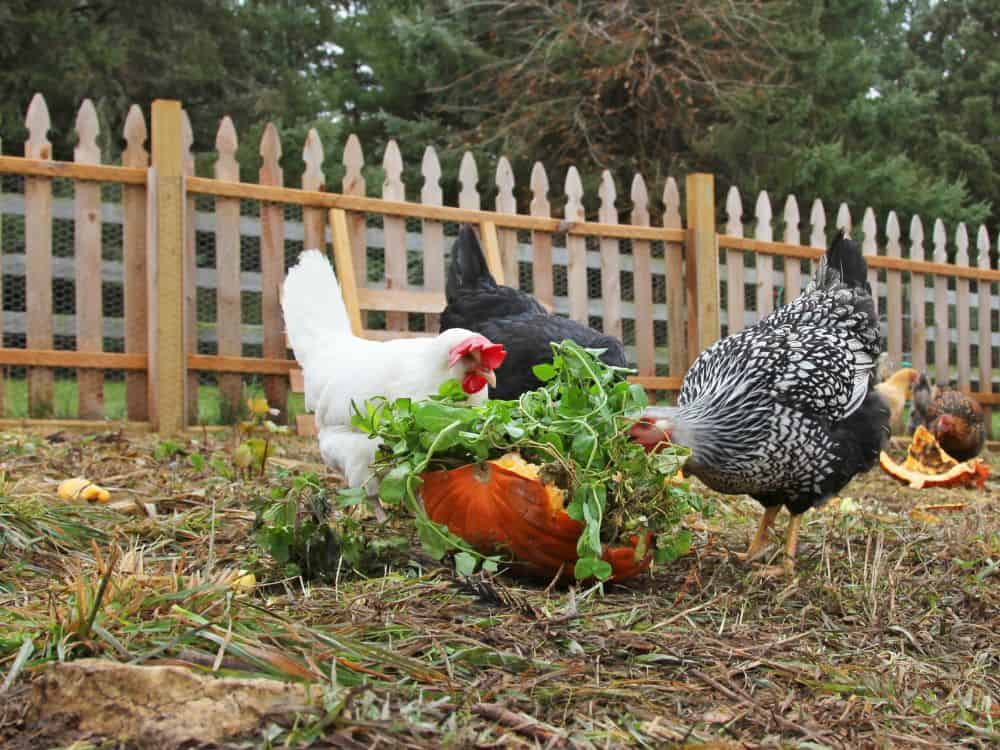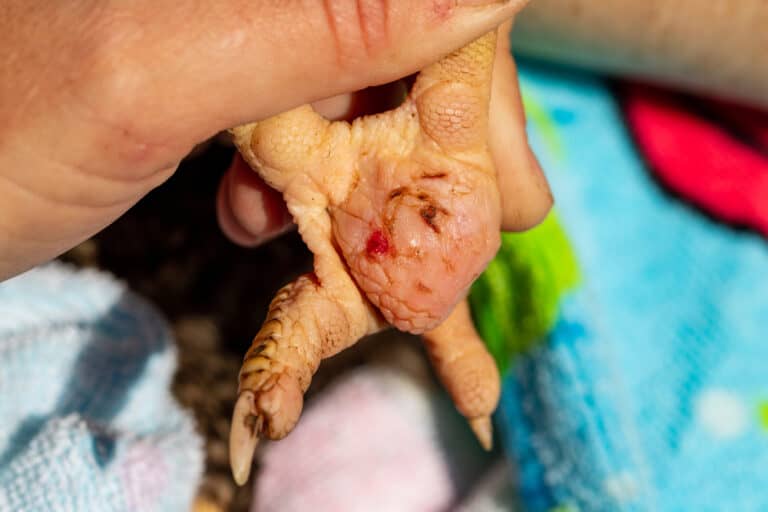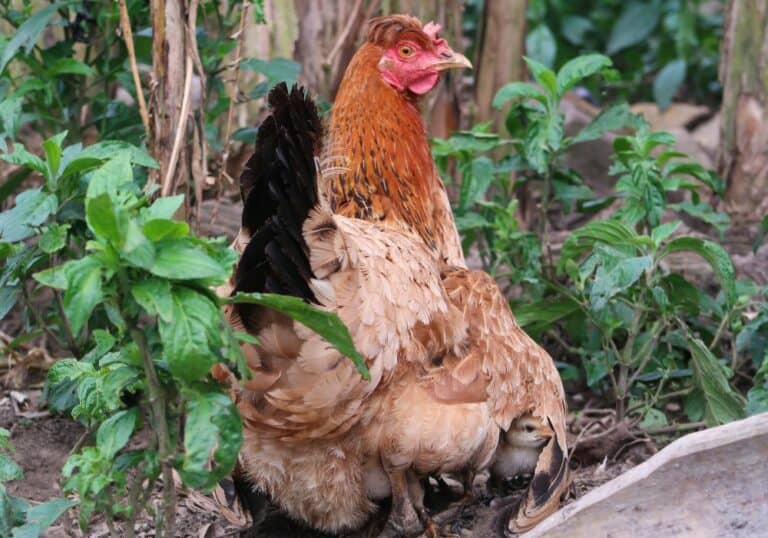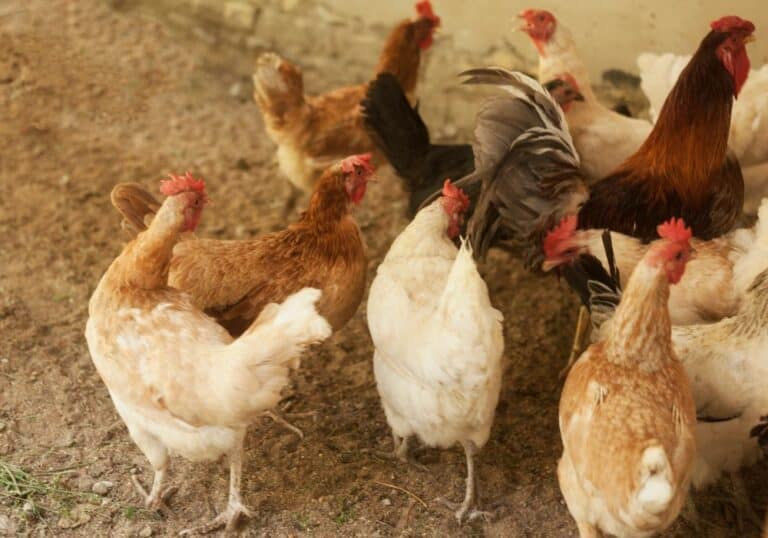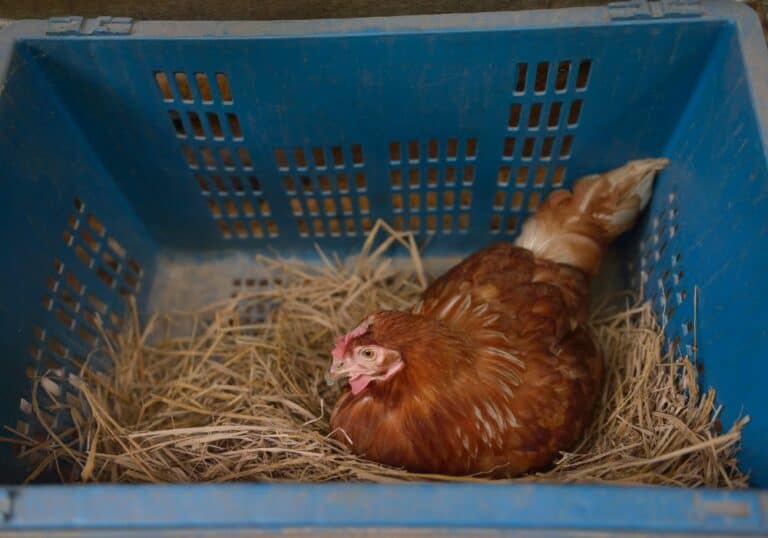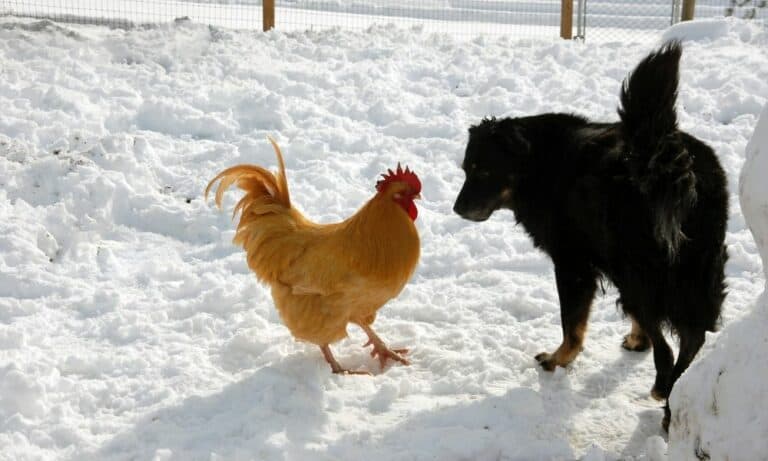One of the best ways to diversify your chickens diet without breaking the bank is to feed them scraps from your own meals. Because tomatoes are a staple in several households, you may be wondering if chickens can eat tomatoes too.
In short, yes, chickens can eat tomatoes, but they can only eat the red part that you would normally cook. Chickens should not eat the leafy parts of a tomato plant or eat unripe green tomatoes; both contain a toxin that chickens should avoid.
While eating tomatoes may seem straightforward, there are a few things to know before feeding them to your chicken. We dive deeper into the different parts you can (and cannot) feed, how to feed tomatoes to chickens, and other foods to consider and avoid when enriching your chickens’ diet.
Can Chickens Eat Tomatoes?
Tomatoes have a nice, umami flavor that pairs well with many dishes, and humans can eat them raw or cooked. Because of this, you’re likely to buy tomatoes weekly to pair with salads or cooked meals, and you may even have them in your home garden.
As long as they’re old enough to eat solid food, chickens are able to eat the fruit of the tomato (and yes–tomatoes are fruits) without issue. Younger chicks should eat smaller quantities, as the acidity can upset their stomach, but other than that there isn’t an issue with fruit.
You cannot, however, feed chickens other parts of the tomato plant, and you should avoid feeding tomatoes that are too ripe (green tomatoes). The plant excretes a glycoalkaloid, solanine, that is toxic when consumed.
What Parts of the Tomato Plant Chickens Should Avoid (and Why)
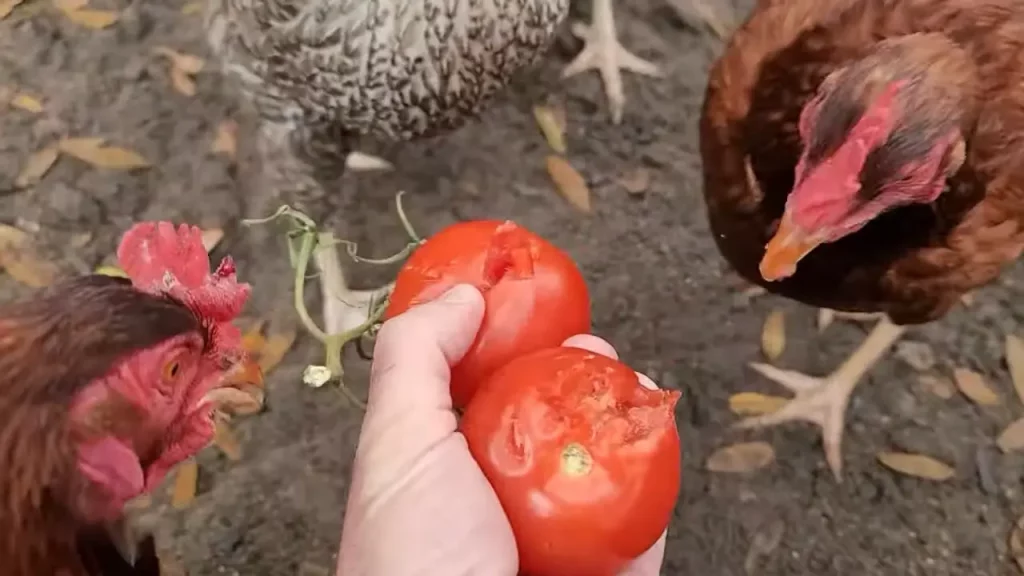
The tomato plant belongs to the Nightshade family (formally known as the solanaceae family). You may already know that these flowering plants are toxic, but let’s dig deeper into the why.
Plants rely on several tools to protect them from overconsumption or early consumption. While tomatoes don’t have thorns, they do their best to taste poorly in the parts that shouldn’t be eaten to make sure they’re left alone until the right time.
The solanine of the unripe tomatoes and the leafy part of the plant tastes bitter, and it can cause gastrointestinal upset, lethargy, diarrhea, and neurological issues to encourage animals to not eat it.
Usually, a chicken will only take a single bite of the plant and decide it has other things to eat. Some stubborn eaters will keep on going, and you should take them to the vet if you notice any issues.
The parts to avoid include:
- Leaves
- Stems
- Flowers
If you’re feeding your chicken tomatoes off the vine, make sure you remove all green parts beforehand. As long as you only feed them the fruit, you shouldn’t have an issue with store-bought tomatoes.
The bigger problem is when you have tomato plants at home. While most chickens learn to leave these along, it’s best to fence them off to make sure no accidents occur. It only takes a few bites to require a vet visit.
Benefits of Eating Tomatoes for Chickens
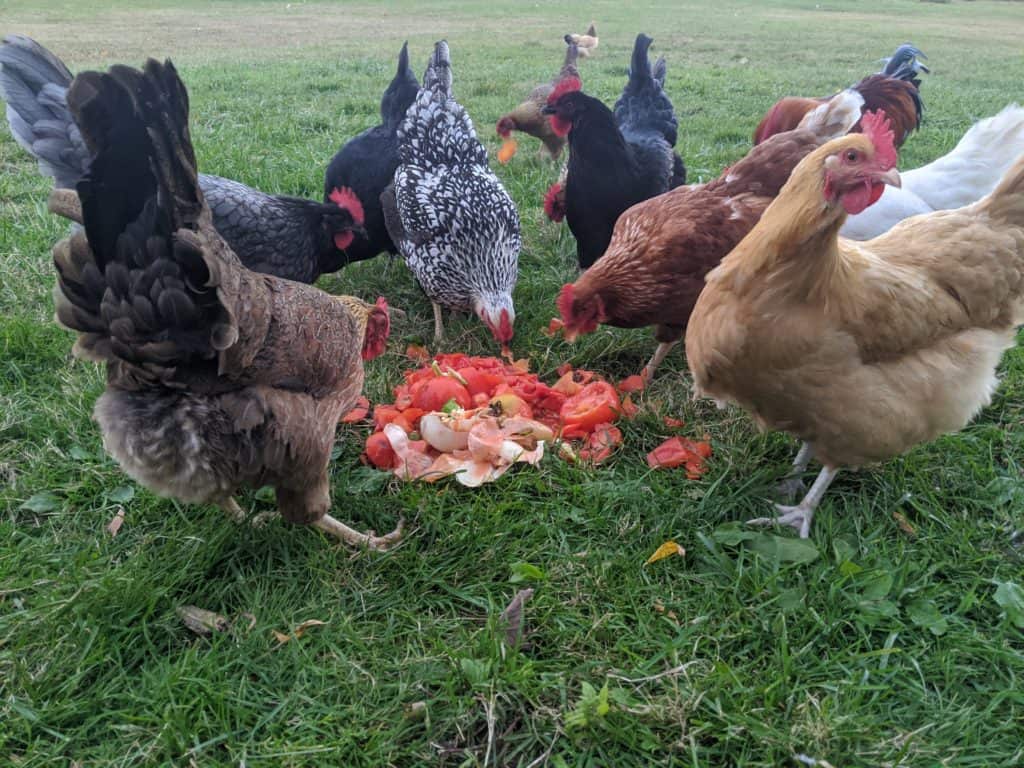
As long as you feed your chickens the right parts of the tomato plant (only the red fruit), there are plenty of benefits you unlock. Tomatoes have a high nutritional value, and they provide:
- Vitamin A: essential for good vision
- Vitamin C: an antioxidant that helps boost their immune system
- Vitamin K: great for preventing heart disease, preventing genetic damage, strengthening bones, and helping blood clot properly
- Vitamin B9 (Folic Acid): beneficial for growth and development with benefits similar to vitamin K
- Potassium: helps maintain the normal fluid levels of a cell and benefits muscle function
- Fiber: essential for proper digestion and nutrient absorption; maintains regular bowel movement and reduces cholesterol levels
- Lycopene (an antioxidant): helps heal the body from harm caused by free-radicals; studies show that it may have cancer-preventing properties
- Beta Carotene: a terpenoid that promotes healthy growth
Tomatoes also have a high moisture content, making them a great choice for keeping chickens healthy and hydrated. For this reason, many add tomatoes to their chickens’ diet when dealing with uncharacteristically hot weather, when their chickens are ill, or when they’re going through major changes (such as molting).
How to Feed Tomatoes to Chickens

To feed tomatoes to chickens, start by ensuring the tomatoes you feed are in the right condition. Just like humans, you don’t want to feed moldy tomatoes or ones that are too ripe.
The safest tomatoes are either orange or red and soft. If your tomatoes are still green, just set them aside and wait until they change color.
Cooked tomatoes are okay as long as they’re cooked alone; do not add salt or other seasonings if you plan on feeding them to your chickens. We prefer feeding raw tomatoes because this preserves the full nutritional value of the fruit.
Chickens can eat tomatoes whole, but they will make a mess while doing it. If you want to keep the mess low and make it easier for them to digest the skin, you can chop them up into smaller pieces. This is best if you have smaller chickens or are feeding to juveniles.
You can feed small amounts of tomato daily, but keep an eye out for accompanying issues. If you feed too much, your chickens may end up with diarrhea and decreased egg production. For most, feeding tomatoes 3 times a week is enough to support health without the inherent risks.
Use a designated feeder if you want to make it easy to clean up when your chickens are done eating. Alternatively, you can scatter it on the floor, grass, or ground (anywhere that isn’t contaminated with poop).
Tomato Drinks for Chickens
You can also make a simple tomato juice for your chicken to provide the nutritional benefits and diverse flavor without dealing with the mess.
Simply chop up the fruit (taking care not to add in any greens), add it to water, and bring it to a boil. Run the liquid through a strainer, and then provide the drink for your chickens as desired (after it cools, of course).
Do not use commercial tomato juice for your chickens; this often contains additives such as salt that may be harmful in certain levels.
Foods Chickens Can Eat (Other than Tomatoes)
Tomatoes are one of the most likely food scraps you will end up with that you can feed your chickens, but there are plenty of other foods that they can eat safely. This is not a comprehensive list, but it contains the most popular fruits, vegetables, and other foods chicken can eat as well as the benefits of these foods.
- Apples (or applesauce): should be chopped and cored (seeds contain trace amounts of cyanide harmful when consumed)
- Beets: chop up for easy digestion; contain antioxidants that protect cells from free-radical damage
- Bell Peppers: may feed any color of pepper (green, yellow, or red); chickens may prefer one color over another; contain beneficial vitamins A, B6, C, E, and K as well as Lycopene
- Blueberries, Blackberries, and Raspberries: a favorite of poultry; rich in antioxidants (but may cause odd poop colors)
- Cabbage: great enrichment for chickens if fed whole on a skewer or in a hanging ball
- Carrots: may be fed either raw or cooked (but fresh and chopped rather than canned); chicken may also eat carrot greens safely
- Cashews: beneficial healthy fats; only feed unsalted
- Cilantro: vitamins and antioxidants promote bone health
- Cucumber: low calorie treat provides key vitamins, minerals, and fiber; great for hydration, but can cause diarrhea if overfed; chickens can eat skin, but may only want to eat the soft fleshy middle
- Pears: sweet and healthy treat that is low in natural sugar
- Popcorn: rich in folate, fiber, and essential vitamins; should be butter and salt free
- Radishes: a crunchy and sweet addition to any diet; rich in fiber and vitamin C as well as smaller amount of calcium and iron; best if chopped up
If you end up with leftovers, we suggest doing a quick online search to see if they’re safe to feed to your chickens. Aim for fresh, organic food, and make sure anything you feed is thoroughly washed and fed in the right portions.
Additionally, live insects such as mealworms can provide beneficial protein as well as enrichment by encouraging foraging behaviors (especially if your chickens do not free-roam).
Occasional Treats for Chickens
Some foods that are good for chickens in very limited quantities include:
- Iceberg lettuce: tasty but has little nutritional value and water content that may cause diarrhea
- Pineapple: tasty but high sugar content
- Grapes: fun to eat and desirable by chickens, but high in sugar; feed seedless and chopped up
It’s better to avoid too many foods that may fill your chickens up without any true nutrition or foods that have high natural sugars. They work decently for very occasional treats, but may be more trouble than they are worth.
Other Foods and Plant Parts for Chickens to Avoid
Chickens should avoid any foods known to be toxic and most foods we already acknowledge as unhealthy.
Do not feed your chicken processed foods or canned varieties of safe fruits and vegetables. These include unnecessary sugar and salt that contributes to issues such as obesity, electrolyte imbalances, and heart failure.
If you have a garden, keep your chickens away from the leafy parts of tomatoes, peppers, and potatoes. Even the skin of potatoes may contain the harmful toxin solanine, so take care to peel them before feeding.
Other foods, such as onions, can cause anemia and affect the flavor of your chicken’s eggs. While it’s not immediately lethal, it’s best to stick to the tried-and-true fruits and vegetables list.
Conclusion
Not only can chickens eat tomatoes, but they’re likely to love having variety in their diet.
When feeding tomatoes, remember:
- Do not feed any green parts of the tomato plant to your chickens
- Allow the tomato fruit to ripen completely before feeding
- Avoid canned varieties or feeding any tomatoes cooked with salt or other spices
As long as you keep these guidelines in mind, your chickens can eat tomatoes whichever way you (and they) prefer.

